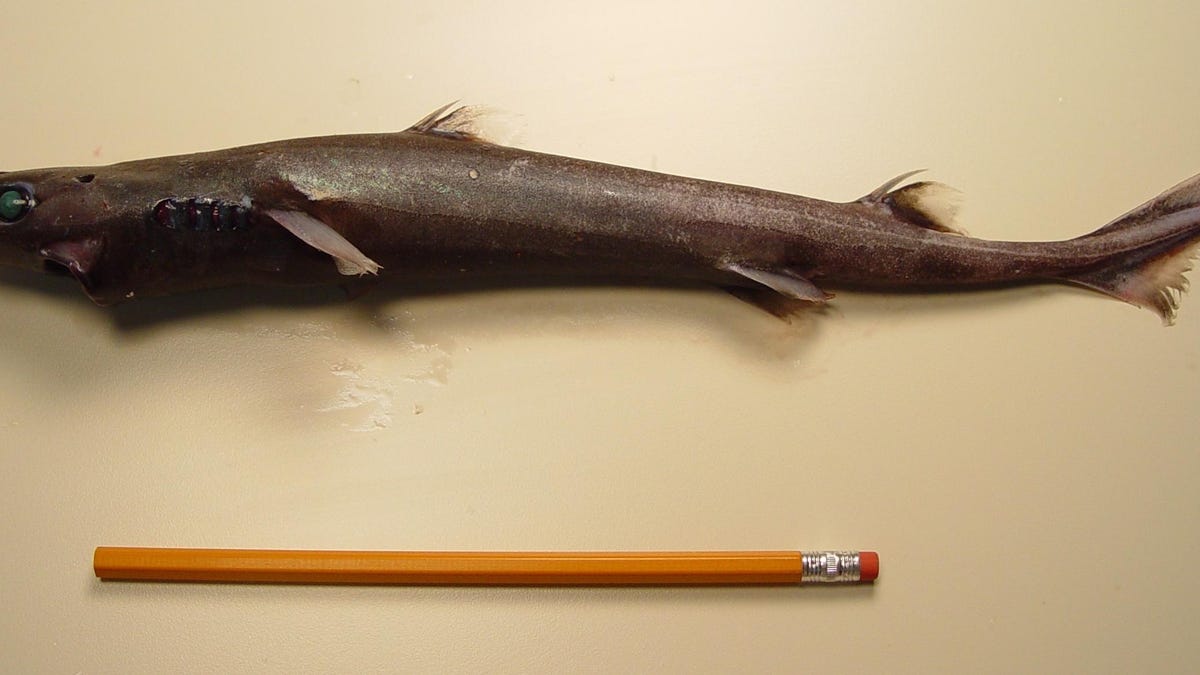A strange deep-sea shark gets a name, almost 30 years after discovery
Shark researcher Bradley Wetherbee named it Laila, after his 17-year-old daughter.

A smooth lanternshark, not too dissimilar to Laila's lantern shark.
University of Rhode Island shark researcher Bradley Wetherbee discovered a new type of Lantern shark while doing his doctorate in the 1990s, but it's only in the last few years, almost 30 years later, that he's been able to give that shark a name.
And he named it after his daughter.
Wetherbee called the shark "Laila's lantern shark" (Etmopterus lailae) after 17-year-old Laila Mostello-Wetherbee. That's right: Wetherbee has known the shark longer than the daughter he named it for.
Laila's lantern shark is a three-foot long, bioluminescent shark that's normally found 1,000 feet deep. Its main point of difference: A longer snout than other lantern sharks.
"It's not uncommon for it to take many years for a new species to be recognized as new to science and then properly described and named," said Wetherbee, a professor in the URI Department of Biological Sciences. "This one just took a little longer than usual."
But if Wetherbee found the shark in the '90s, why did it take so long for it to officially get a name?
According to a press release, Wetherbee found Laila's lantern shark among 150 frozen shark specimens gathered in 1988 by scientists from the National Marine Fisheries Service. At the time their research was focused on hammerhead sharks, so they weren't interested. Wetherbee sorted the sharks according to species, but a broken-down freezer meant all but 15 of the sharks eventually had to be thrown out.
Those 15 sharks were sent to another researcher, David Ebert at the Moss Landing Marine Laboratory, who was interested in the classification of lantern sharks. After five years, Ebert discovered that Wetherbee's sharks were actually a brand new species.
The definitive paper, identifying the new species, was published years later. And Ebert was happy to let Wetherbee name the shark after his daughter.
"There are only 500 species of sharks and only a handful of people in the world have a shark named after them," Wetherbee said.
"People often ask me what my favorite shark is, and I used to say the tiger shark. But now I say it's Laila's lantern shark."

